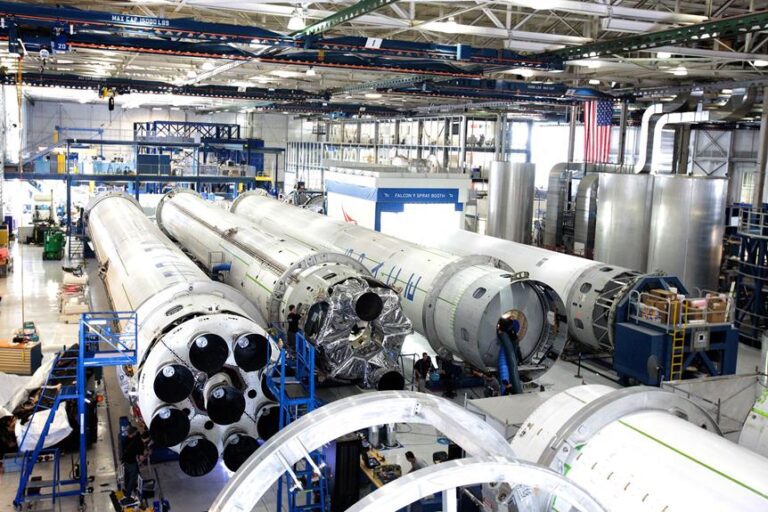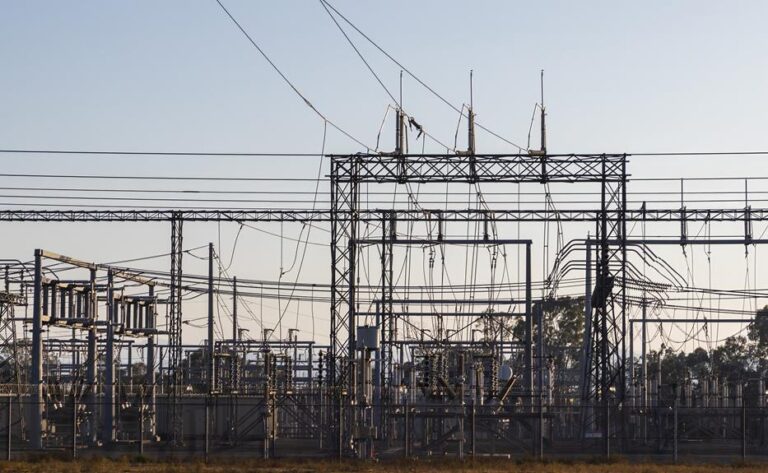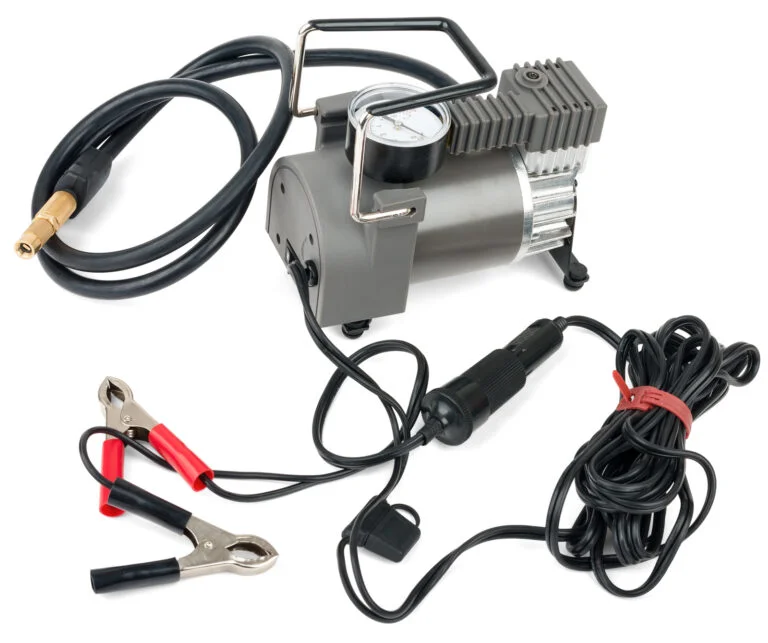Stay in Control: Electronic Throttle Controller Benefits
Approximately 80% of modern vehicles use an electronic throttle controller, an often overlooked component that significantly impacts driving experience. This article delves into the science behind this crucial device, detailing its function, role in vehicle performance, and safety benefits. It offers an objective analysis for those considering a transition to this technology, supported by real-life case studies. Gain control, enhance your driving experience, and join the revolution in vehicle performance with electronic throttle controllers.
Key Takeaways
- Electronic throttle controllers enhance throttle response and contribute to overall vehicle performance.
- They optimize fuel efficiency by managing air intake and fuel combustion.
- Electronic throttle controllers play a critical role in moderating acceleration and speed, ensuring control and vehicle stability.
- Transitioning to electronic throttle controllers offers enhanced customizability and a tailor-made driving experience.
Understanding the Function of an Electronic Throttle Controller
One must first comprehend that an electronic throttle controller is a device designed to interpret the signals from your accelerator pedal and translate them into an optimal throttle response. This controller, a critical component of your vehicle's engine management system, significantly influences the overall performance and efficiency of your vehicle.
The electronic throttle controller is a conduit between the accelerator pedal and the engine's throttle body. When you press the accelerator pedal, the controller processes the input and sends a corresponding signal to the throttle body, which in turn regulates the amount of air entering the engine. This operation is crucial in determining the vehicle's speed and acceleration.
An upgrade to the throttle body can enhance the vehicle's performance, particularly when combined with a turbocharger. A throttle body upgrade allows for greater airflow into the engine, resulting in improved horsepower and torque. Similarly, a turbocharger uses exhaust gases to force more air into the combustion chamber, increasing the engine's power output. Together, these upgrades can provide a noticeable boost in performance, liberating your vehicle from its factory-imposed limitations.
The Role of Electronic Throttle Controller in Vehicle Performance
The electronic throttle controller plays a significant role in vehicle performance, particularly in regard to fuel efficiency, throttle response, and safety measures. By modulating the signal from the throttle pedal to the ECU, it provides drivers with optimal control over fuel consumption and engine output. Additionally, the controller's built-in safety mechanisms contribute to the overall operational security of the vehicle.
Enhancing Fuel Efficiency
While many factors contribute to a vehicle's overall performance, an electronic throttle controller plays a significant role in enhancing fuel efficiency by optimizing throttle response. This device can also help in transmission modifications and optimize the transmission shift kit, improving overall vehicle performance.
Moreover, the electronic throttle controller can provide better control over fuel consumption, resulting in a more economical drive. Below is a table that illustrates its benefits.
| Benefit | Description | Impact |
|---|---|---|
| Enhanced Throttle Response | Optimizes the vehicle's responsiveness | Increases fuel efficiency |
| Transmission Modifications | Helps in fine-tuning the transmission | Improves overall vehicle performance |
| Optimized Transmission Shift Kit | Helps the shift kit function more efficiently | Enhances vehicle speed |
| Better Fuel Control | Manages fuel consumption effectively | Reduces costs |
| Improved Vehicle Performance | Leads to a smoother and more responsive drive | Increases driving satisfaction |
Throttle Response Improvement
Several aspects of vehicle performance, such as speed and fuel economy, can see significant improvements with the use of an electronic throttle controller, primarily through its ability to enhance throttle response. In essence, the throttle controller manipulates the signal between the pedal and engine, thus enabling faster communication and improved responsiveness. This mechanism eliminates throttle lag, which is the delay between the driver's pedal input and the engine's response. By doing so, it allows for accurate adjustment according to the driver's needs and driving conditions. Therefore, the controller not only boosts vehicle performance but also contributes to a smoother, more controlled driving experience. In summary, the electronic throttle controller plays an instrumental role in optimizing throttle response, thereby significantly enhancing overall vehicle performance.
Safety Mechanism Role
Undeniably, an electronic throttle controller substantially contributes to vehicle safety by moderating the driver's control over the vehicle's acceleration and speed. It achieves this by modifying the signal from the throttle pedal to the engine control unit (ECU), allowing for meticulous control over throttle opening and closing rates. The controller's ability to adjust these rates in real-time aids in preventing sudden surges of power that could potentially compromise vehicle stability.
Furthermore, the controller's fail-safe mode automatically reverts to the vehicle's standard throttle response in case of any system failures, thus ensuring unimpeded vehicle operation. Coupled with advanced diagnostic capabilities, the electronic throttle controller plays a pivotal role in fortifying the overall safety mechanism of modern vehicles.
The Science Behind Enhanced Throttle Response
Enhanced throttle response is rooted in the intricate science of optimizing vehicle performance. It is a multidimensional concept involving a comprehensive understanding of throttle response, exploring its benefits, and the technical aspects that drive its performance. The following discussion will provide a detailed and objective analysis of these points, elucidating the mechanics and advantages of enhanced throttle response.
Understanding Throttle Response
Throttle response, a crucial component in the performance of any vehicle, refers to the time it takes for a car to increase speed after the accelerator pedal has been engaged. The science behind enhanced throttle response lies predominantly in an electronic throttle controller's ability to interpret the driver's pedal input and convert it into a corresponding throttle opening. This immediate interpretation and response improve the vehicle's acceleration rate and overall performance. It mitigates the delay typically associated with a conventional mechanical linkage setup. The electronic throttle controller can also be calibrated, providing drivers the freedom to adjust throttle response to their specific driving style or conditions. Therefore, understanding throttle response and its enhancement through an electronic throttle controller is paramount for drivers seeking optimal control and performance in their vehicles.
Benefits of Enhancement
As we delve into the benefits of enhanced throttle response, it becomes clear that the science behind it contributes significantly to a smoother and more efficient driving experience. Enhanced throttle response, facilitated by advanced electronic throttle controllers, optimizes the relation of throttle pedal position and the opening of the throttle plate. This allows for a more accurate, immediate response, enhancing the vehicle's performance.
This optimization results in a more direct transmission of the driver's intentions to the car's engine, eliminating the lag common in traditional throttle systems. Consequently, the driver gains a greater degree of control and precision, leading to an overall improved driving experience. Therefore, the technical superiority of electronic throttle controllers is not merely confined to theoretical discussions, but has tangible, practical benefits that empower drivers with enhanced control and responsiveness.
Science Behind Performance
In the realm of automotive technology, two key factors play a vital role in the enhanced throttle response: the intricacies of electronic throttle control systems and the precision of the software algorithms that govern them. The electronic throttle control system replaces the manual linkage with electronically controlled actuators, resulting in a more precise, faster response. This system is governed by software algorithms that interpret the driver's pedal input and command the throttle accordingly. These algorithms can be fine-tuned for different driving conditions, optimizing the throttle response for each situation. This level of precision and control is what provides the enhanced throttle response, allowing the driver to experience a smoother, more responsive drive. The science behind this performance enhancement is a testament to the advances in automotive technology.
Key Advantages of Using an Electronic Throttle Controller
The utilization of an electronic throttle controller offers considerable benefits for enhancing vehicle performance and driver control. This device, a crucial component of modern cars, directly interfaces with the throttle body to manage the amount of air flowing into the engine. By doing so, it ensures optimal power and efficiency, thereby improving the overall driving experience.
The key advantages that make electronic throttle controllers indispensable include:
- *Improved Throttle Response:* The controller reduces the lag in throttle response, providing instantaneous power when needed.
- This is particularly beneficial during overtaking maneuvers or quick starts.
- *Greater Fuel Efficiency:* By managing the air intake, the controller optimizes fuel combustion.
- This results in improved fuel efficiency, leading to cost savings.
- *Enhanced Customizability:* Electronic throttle controllers often come with multiple modes.
- These modes can be used to adjust the throttle response according to driving conditions, providing a tailor-made driving experience.
Making the Switch: Transitioning to an Electronic Throttle Controller
The process of transitioning to an electronic throttle controller entails a sequence of technical steps that need to be meticulously executed. This phase of adaptation, however, may be accompanied by certain challenges that necessitate expertise for effective resolution. In our following discussion, we will provide a detailed analysis of the transition process, while also objectively addressing the potential difficulties that may arise during this switch.
Transition Process Steps
Understanding the sequence of transition allows for a seamless switch to an Electronic Throttle Controller. The process involves a series of steps, each crucial to ensure the successful integration of the device into your vehicle.
- Evaluate the Current System:
- Assess the state of your current throttle system
- Identify areas that require improvement
- Install the Electronic Throttle Controller:
- Follow the instructions provided by the manufacturer
- Ensure proper connection to avoid malfunction
- Test Drive and Calibration:
- Take a test drive to check the performance
- Calibrate the controller as per your driving preferences
This transition process is designed to empower you, offering liberation from the constraints of your old throttle system. As we proceed, let's delve into potential transition challenges.
Potential Transition Challenges
While transitioning to an electronic throttle controller can yield significant benefits, it is important to acknowledge and prepare for potential challenges that may arise during the process. These challenges are generally technical in nature, with the most common being the complexity of installation and programming. A lack of technical expertise can make this task daunting, and even with a detailed manual, discrepancies can occur that lead to system malfunctions. Moreover, compatibility issues with existing engine management systems can arise, requiring additional adjustments. Furthermore, the cost of equipment and potential need for professional installation can be substantial. Therefore, a thorough understanding and careful planning are required to ensure a smooth transition, maximizing the benefits and minimizing the potential difficulties.
Decoding the Relationship Between Throttle Controllers and Fuel Efficiency
A significant number of factors, including the use of electronic throttle controllers, can dramatically affect a vehicle's overall fuel efficiency. The throttle controller is a critical component in managing the engine's air intake, which directly influences the combustion process and thus, fuel consumption.
Understanding the relationship between throttle controllers and fuel efficiency involves a deep dive into:
- Throttle Response:
- Faster throttle response can lead to increased fuel consumption due to the rapid acceleration.
- Conversely, a slower response may improve fuel efficiency as it promotes a more gradual and controlled acceleration.
- Driving Conditions:
- Driving conditions, such as traffic and road terrain, can affect how the throttle controller impacts fuel efficiency.
- For instance, in heavy traffic, a slower throttle response could lead to better fuel economy.
- Driver Behaviour:
- How aggressively or conservatively a driver uses the accelerator pedal will also influence fuel usage.
- A throttle controller can be adjusted to suit individual driving styles, optimizing fuel efficiency.
In essence, a well-managed electronic throttle controller can significantly contribute to fuel efficiency. It provides the driver with greater control, ultimately leading to a more efficient and economical driving experience.
Safety Benefits of Electronic Throttle Controllers
Electronic throttle controllers provide numerous safety benefits, enhancing the vehicle's responsiveness while offering the driver a higher degree of control over acceleration. This advanced technology manipulates the throttle valve's opening, thereby ensuring that the engine receives the appropriate amount of air as per the driver's command. In scenarios where swift reactions are critical, such as overtaking or avoiding obstacles, this immediate response can help prevent accidents.
Moreover, the in-built safety features of electronic throttle controllers further foster a secure driving environment. For instance, the 'limp mode' is designed to limit the performance of the vehicle in case of a system malfunction, reducing the risk of uncontrolled acceleration. Additionally, these controllers are equipped with self-diagnostic capabilities, providing real-time error detection and alerting the driver to potential issues.
In essence, electronic throttle controllers act as an intermediary between the driver's input and the engine's response, creating a safer, more predictable driving experience. They provide the liberty to control acceleration while ensuring safety, thereby promoting a harmonious interaction between the driver and the vehicle. This is a significant leap forward in vehicle safety technology, offering a safer, more controlled driving experience.
How Electronic Throttle Controllers Impact Driving Experience
Transforming the way drivers interact with their vehicles, electronic throttle controllers significantly enhance the driving experience by offering improved responsiveness, control, and safety. This innovative device manipulates the signal sent to the electronic throttle body for optimized performance, allowing drivers to experience a more direct and precise control of their vehicles.
Here are some ways how electronic throttle controllers impact the driving experience:
- Improved Responsiveness:
- By adjusting the signal from the pedal, the electronic throttle controller provides instant throttle response. This eliminates the delay commonly experienced in drive-by-wire systems, giving drivers a more engaging and dynamic drive.
- Enhanced Control:
- The device offers multiple driving modes, allowing drivers to customize their driving experience. From economy mode for fuel efficiency to sport mode for a more aggressive response, drivers have the freedom to match their driving style.
- Increased Safety:
- Electronic throttle controllers contribute to safety by ensuring the vehicle responds accurately to the driver's input. By eliminating throttle delay, it reduces the risk of uncontrolled acceleration in critical driving situations.
Case Studies: Real-Life Impact of Electronic Throttle Controllers
While the theoretical benefits of electronic throttle controllers have been extensively discussed, it is through real-life case studies that we can truly appreciate their transformative impact on driving experience and performance.
In one such case, a professional race car driver employing an electronic throttle controller reported a noticeable enhancement in throttle response, resulting in improved lap times. The driver, who had been previously struggling with a sluggish gas pedal, experienced newfound liberation on the track through the controller's advanced technology.
In another instance, a daily commuter using the same device noted a significant improvement in fuel efficiency. The electronic throttle controller allowed for a more precise control over fuel intake, reducing unnecessary fuel consumption. This case highlights the practical benefits of using a controller, beyond just performance enhancement.
A trucking company also reported notable benefits from installing electronic throttle controllers in their fleet. The controllers helped to mitigate the effects of driver throttle misuse, leading to reduced wear and tear on the vehicles, as well as increased fuel efficiency.
These real-life cases underscore the tangible benefits of electronic throttle controllers. They serve as testament to the potential of this technology to revolutionize driving experience and performance, while also showcasing practical advantages such as fuel savings and improved vehicle longevity.
Maintenance Tips for Your Electronic Throttle Controller
Ensuring the longevity and optimal performance of your electronic throttle controller involves routine maintenance checks and, just as importantly, understanding how to properly use the device. It's pivotal to ensure that the connections are clean, free from corrosion, and securely fastened. Regular inspection of the wiring harness and connectors for any sign of wear and tear is also crucial.
The following maintenance tips can be of great assistance:
- Regular Cleaning:
- Use a soft, dry cloth to clean the device.
- Avoid using water or any other liquid cleaners as they may damage the electronic components.
- Proper Installation:
- Ensure that the device is installed correctly and securely.
- Refer to the user manual or seek professional assistance if needed.
- Periodic Inspection:
- Regularly check the wiring and connectors for any signs of damage.
- Replace any worn out parts immediately to prevent further damage.
Understanding how to maintain your electronic throttle controller not only extends its lifespan but also ensures it operates at peak efficiency. By adhering to these simple maintenance tips, you can enjoy the benefits of your device for a long time. Freedom from worry about device malfunction is truly a form of liberation.
Frequently Asked Questions
What Is the Average Cost of Installing an Electronic Throttle Controller?
The average cost for an electronic throttle controller installation can vary widely, generally ranging from $200 to $400. This cost encompasses both the device itself and the labor for professional installation.
Can an Electronic Throttle Controller Be Installed in Any Type of Vehicle?
While the world isn't one's oyster when it comes to installing electronic throttle controllers, most modern vehicles with electronic throttle bodies can support them. However, it's crucial to ensure compatibility to avoid performance issues.
How Long Does It Typically Take to Install an Electronic Throttle Controller?
The installation time for an electronic throttle controller varies, often dependent on the vehicle's make and model. Typically, a professional can complete the process in about 30 minutes to 1 hour.
Are There Any Potential Downsides or Risks to Using an Electronic Throttle Controller?
While electronic throttle controllers can enhance vehicle performance, potential downsides may include incorrect installation leading to throttle malfunction, or incompatibility with certain vehicle models. Always ensure correct model matching and professional installation to mitigate these risks.
Can an Electronic Throttle Controller Be Removed or Switched Back to a Traditional Throttle System if Desired?
Yes, an electronic throttle controller can be removed or reverted back to a traditional system. However, professional assistance is recommended due to the technical aspects involved in the reinstallation process.
Conclusion
In conclusion, the Electronic Throttle Controller represents a significant paradigm shift in the automotive industry. Its role in enhancing vehicle performance, ensuring safety, and improving driving experience is increasingly acknowledged. Ensuring proper maintenance is essential for its optimal functioning. Despite being a relatively modern invention, it has cemented its place as an integral component of modern automobiles, much like the steam engine in the industrial revolution.







